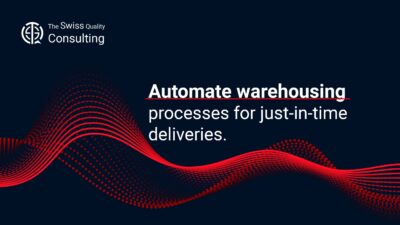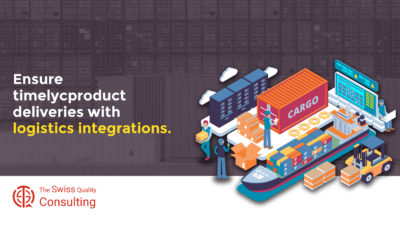The Importance of Automation in Modern Business
In today’s fast-paced business landscape, the ability to adapt and streamline operations is crucial for success. As the quote suggests, ” Warehousing automation processes for just-in-time deliveries,” automation has become a cornerstone of efficient supply chain management and a key driver of just-in-time (JIT) deliveries. In this article, we will explore the significance of automating warehousing processes and how it can benefit businesses in various industries.
Understanding Just-in-Time Deliveries
Just-in-time deliveries are a strategy that aims to minimize inventory holding costs while ensuring that products are delivered exactly when they are needed. This approach has gained popularity across industries, from manufacturing to retail, as it reduces waste, lowers carrying costs, and enhances overall operational efficiency. However, JIT deliveries come with their own set of challenges, including the need for precise coordination and a highly efficient supply chain.
The Role of Warehousing in JIT Deliveries
Warehousing plays a pivotal role in JIT deliveries. It serves as a buffer between suppliers and manufacturers or retailers, allowing for the synchronization of supply and demand. In a JIT system, warehousing must be highly efficient, with processes that support rapid order fulfillment and minimize the time products spend in storage.
The Benefits of Automating Warehousing Processes
Automating warehousing processes offers numerous advantages for businesses aiming to implement JIT deliveries effectively. Let’s explore some of these benefits in detail:
1. Enhanced Accuracy
Automation reduces the likelihood of human errors in tasks such as order picking and inventory tracking. This heightened accuracy is critical in JIT deliveries, where any mistakes can disrupt the entire supply chain.
2. Improved Efficiency
Automated systems can handle tasks more efficiently than manual processes. For instance, automated conveyor systems can transport goods swiftly within a warehouse, reducing the time products spend in transit.
3. Real-time Visibility
Automation provides real-time visibility into inventory levels and order statuses. This visibility allows businesses to make informed decisions and respond quickly to changes in demand.
4. Cost Savings
Reduced labor costs, lower error rates, and optimized space utilization all contribute to cost savings when warehousing processes are automated.
Key Aspects of Warehousing Automation
To automate warehousing processes successfully, businesses must consider several key aspects:
1. Warehouse Layout and Design
The physical layout of a warehouse should be designed with automation in mind. This includes the placement of conveyor systems, storage racks, and picking stations.
2. Inventory Management Software
Effective inventory management software is essential for tracking products, orders, and stock levels in real-time. Integration with other systems, such as order management and transportation management, is also crucial.
3. Robotics and Automation Equipment
Robotic systems, automated guided vehicles (AGVs), and conveyor belts are examples of automation equipment that can be deployed in warehouses to streamline various tasks.
4. Data Analytics and Predictive Analytics
Utilizing data analytics and predictive analytics can help businesses forecast demand accurately and make data-driven decisions, ensuring JIT deliveries are consistently met.
5. Training and Workforce Transition
As automation is implemented, the workforce may need to transition to new roles, such as equipment maintenance and oversight. Proper training and support are essential during this transition.
Real-World Examples of Successful Warehousing Automation
To illustrate the impact of automation on warehousing processes and JIT deliveries, let’s explore a few real-world examples:
1. Amazon
Amazon’s vast network of fulfillment centers relies heavily on automation to process and deliver millions of orders daily. Robots assist with picking, packing, and shipping, enabling the e-commerce giant to offer fast and reliable deliveries to customers.
2. Toyota
Toyota’s production system, often credited with popularizing JIT manufacturing, also incorporates JIT deliveries. Automated material handling systems ensure that components arrive at the production line precisely when needed, minimizing inventory and waste.
3. Zara
Fashion retailer Zara employs an agile supply chain that leverages automation in its distribution centers. Automated sorting systems and conveyor belts enable Zara to quickly replenish store inventory based on real-time sales data.
Challenges and Considerations
While the benefits of automating warehousing processes for JIT deliveries are substantial, businesses must also be aware of potential challenges and considerations:
1. Initial Investment
The upfront cost of implementing automation can be significant. However, businesses should weigh this against the long-term savings and efficiency gains.
2. Maintenance and Downtime
Automated systems require regular maintenance to ensure they operate smoothly. Downtime for maintenance should be carefully scheduled to minimize disruptions.
3. Workforce Impact
As mentioned earlier, the transition to automation may impact the workforce. Clear communication and training programs are essential to minimize resistance and ensure a smooth transition.
Conclusion: Navigating the Future of Warehousing
In conclusion, automating warehousing processes is not just a suggestion but a strategic imperative for businesses aiming to excel in the era of JIT deliveries. The quote, “Automate warehousing processes for just-in-time deliveries,” underscores the importance of efficiency, accuracy, and real-time visibility in today’s competitive business environment.
By embracing change management, executive coaching services, effective communication, and management consulting, businesses can navigate the complexities of automation and JIT deliveries. Additionally, leveraging Generative Artificial Intelligence (GAI) can provide valuable insights for optimizing warehousing operations.
As we look ahead, automation will continue to reshape the warehousing landscape. Those who embrace it will be better positioned to meet customer demands, reduce costs, and achieve operational excellence.























